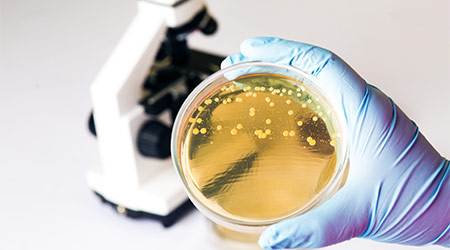Infection control measures in healthcare facilities tend to focus on common touchpoints — door handles, restroom faucets, desktops and countertops, not to mention HVAC systems and components. But as recent research reveals, almost any surface and component in a facility is subject to contamination.
Ice machines in hospitals are often contaminated with pathogens that can cause serious nosocomial infections, according to a study reported by Helio. Researchers tested dozens of ice machines in healthcare facilities and found they were frequently contaminated with gram-negative bacilli and Candida species.
They swabbed the drain pans, ice and water chutes of 64 ice machines in five hospitals and two nursing homes in Cleveland and cultured the samples to determine how often and where the machines were contaminated. They visually inspected drain pans for standing water, ice cubes, grime and signs of biofilm formation.
All but one machine had stagnant water in the drain pans. The researchers observed machines that dripped water when not in use, machines with drains blocked by ice, machines that splattered water onto surrounding countertops and floors and machines with visible grime and slime layers.
Gram-negative bacilli or Candida species or both were recovered from all 64 drain pans, 72 percent of drain pan grills and more than one-half of ice and water chutes, or both. Ice often fell through drain pan grills, splattering contaminated water onto cups and the hands of people using the machines. According to their observations, individuals’ hands often made contact with the ice or water chutes or falling ice, suggesting a potential route by which personnel might transfer pathogens to ice machines, they wrote.
Click here to read the article.

 Code Compliance Isn't Enough for Healthcare Resilience
Code Compliance Isn't Enough for Healthcare Resilience Ribbon Cutting Marks First Phase Completion for New Montefiore Einstein Facility
Ribbon Cutting Marks First Phase Completion for New Montefiore Einstein Facility Brooks Rehabilitation Launches 3 New Major Construction Projects
Brooks Rehabilitation Launches 3 New Major Construction Projects Joint Commission Standards: What Updates Matter Most?
Joint Commission Standards: What Updates Matter Most? Swinerton Completes Construction at Atlanta's Grady Hospital
Swinerton Completes Construction at Atlanta's Grady Hospital